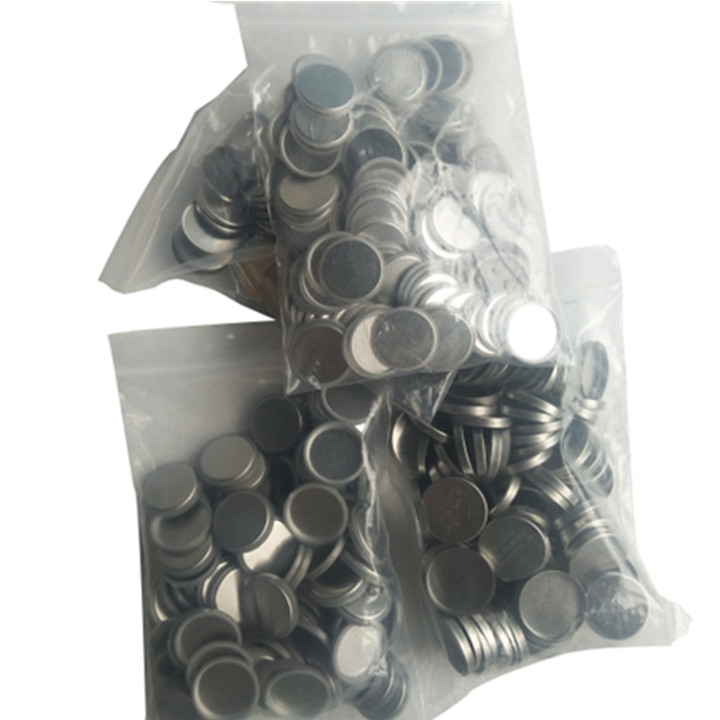Coin Cell Case: An Overview
Coin cell cases, also known as button cell cases, are the outer enclosures that house the components of coin cells or button cells. These small, cylindrical cases are crucial for ensuring the proper functioning, safety, and longevity of the batteries. This overview covers the materials, design, manufacturing process, and key considerations in the production of Coin Cell Parts.
Materials
Coin cell cases are typically made from materials that offer a combination of mechanical strength, corrosion resistance, and electrical conductivity. Common materials include:
Stainless Steel: The most commonly used material for Coin Cell Components due to its excellent corrosion resistance, mechanical strength, and cost-effectiveness.
Nickel-Plated Steel: Offers similar properties to stainless steel but with added benefits of enhanced corrosion resistance due to the nickel plating.
Aluminum: Lightweight and corrosion-resistant, though less commonly used than stainless steel.
Design
A coin cell case consists of two main parts:
Can (Positive Terminal): The bottom part of the case, which houses the cathode and is typically marked with a "+" symbol.
Cap (Negative Terminal): The top part of the case, which houses the anode and is typically marked with a "-" symbol.
Key Design Considerations
Size and Shape: Coin cell cases come in various standard sizes (e.g., CR2032, CR2025, CR2016), where the first two digits denote the diameter in millimeters, and the last two digits denote the height in tenths of a millimeter.
Sealing: Ensuring an airtight and leak-proof seal between the can and the cap is critical to prevent electrolyte leakage and ensure the longevity of the cell.
Electrical Contact: The design must ensure reliable electrical contact between the internal components and the external terminals.
Markings: Clear markings of the positive and negative terminals for easy identification and correct installation.
Manufacturing Process
1. Material Preparation
Sheet Metal Selection: High-quality stainless steel or nickel-plated steel sheets are selected based on thickness and other specifications.
Sheet Cutting: Sheets are cut into smaller pieces that will be used for forming the can and cap.
2. Deep Drawing
Can Formation: Using a deep drawing process, the steel sheets are formed into the cylindrical shape of the can. This involves drawing the sheet metal into a die cavity with a punch to create the desired shape.
Cap Formation: Similarly, the cap is formed using the deep drawing process, but with slightly different dimensions and features.
3. Trimming and Sizing
Trimming: Excess material from the edges of the can and cap is trimmed to ensure precise dimensions.
Sizing: The can and cap are sized to ensure they fit together correctly and provide a secure seal.
4. Cleaning and Surface Treatment
Cleaning: Both the can and cap are thoroughly cleaned to remove any contaminants or residues from the manufacturing process.
Surface Treatment: Depending on the material, surface treatments such as nickel plating may be applied to enhance corrosion resistance.
5. Sealing and Welding
Sealing: The can and cap are assembled with the internal components (cathode, anode, separator, and electrolyte) and sealed using crimping or laser welding to ensure an airtight and leak-proof seal.
Key Considerations in Coin Cell Case Production
Material Quality: Using high-quality materials is crucial for ensuring the mechanical strength, corrosion resistance, and overall performance of the coin cell.
Precision Manufacturing: Accurate forming, trimming, and sizing are essential to ensure the can and cap fit together perfectly and provide a reliable seal.
Surface Treatment: Proper surface treatment, such as nickel plating, can significantly enhance the corrosion resistance and longevity of the coin cell.
Quality Control: Rigorous testing and inspection are necessary to ensure that each coin cell case meets the required specifications and standards.
Applications
Coin cell cases are used in various small electronic devices, including:
Watches: Providing power for timekeeping functions.
Calculators: Supplying energy for display and processing functions.
Hearing Aids: Ensuring reliable power for sound amplification.
Remote Controls: Powering signal transmission for remote operation.
Medical Devices: Used in devices like glucose monitors and thermometers.
Conclusion
The coin cell case is a critical component of the coin cell battery, ensuring the integrity, safety, and performance of the cell. The production process involves careful material selection, precise manufacturing techniques, and stringent quality control to meet the high standards required for these small but essential power sources. As technology continues to advance, the design and manufacturing of coin cell cases will continue to evolve, meeting the growing demand for reliable and efficient power solutions in various applications.

 fr
fr en
en de
de ru
ru es
es pt
pt ko
ko tr
tr pl
pl th
th







 réseau ipv6 pris en charge
réseau ipv6 pris en charge